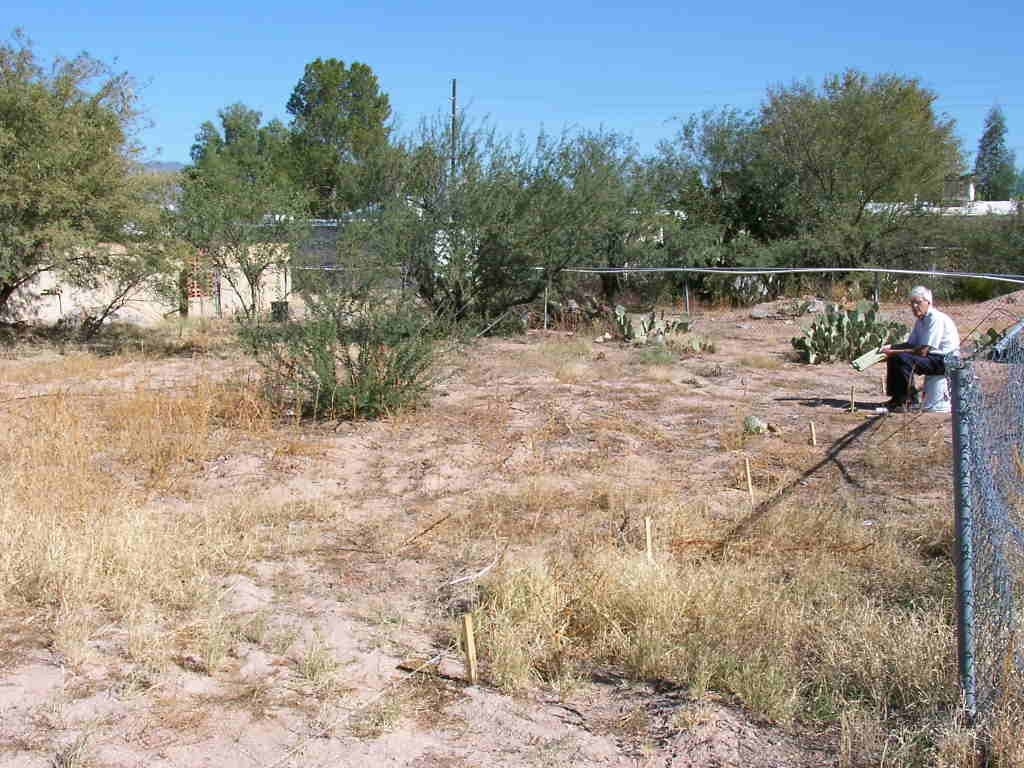Socratic teacher. Respected scientist. Attentive leader. The Yoda of gardening.
These are the ways some people fondly talk about the late George Brookbank, who launched the Pima County Master Gardeners Program and the Community Gardens of Tucson.
He died in March at 93 years old.
Brookbank’s contributions have been in the public sphere lately. In September, the master gardeners released the 32-page “Planting Knowledge, a History of the Pima County Master Gardener Program 1983-2018” (2018, West Press, $10). It describes much of Brookbank’s work with the program and gardening education in general.
The group also will honor Brookbank at its 35th anniversary celebration Oct. 27.
Brookbank was a 24-year horticultural agent with the University of Arizona Cooperative Extension. The extension developed and runs the state’s master gardener program.
Rick Gibson, Brookbank’s counterpart in Pinal County, will be one of the speakers paying tribute.
“I will talk about his openness to new ideas,” Gibson said, “that he enjoyed being with people and that he was one of the solid foundation stones upon which the master gardeners in the UA system was founded.”
Brookbank was not only “an excellent scientist,” but a teacher who put that knowledge to practical use, said Gibson, who currently heads the master gardener programs in Pima and Pinal counties.
Brookbank spread that knowledge not only by training master gardeners as gardening educators, but in dozens of taped segments on television and radio and in advice columns in the Arizona Daily Star and other news outlets.
In the early years of the master gardener program, he would field gardening questions from the public while sitting under mulberry trees outside of a house that was converted into his office.
He rarely gave answers, recalls master gardener Toni Moore, but asked questions that guided the person to discover the problem and solution. It’s a classic use of the Socratic method of learning.
“George didn’t just share his knowledge,” Moore said in 2015 remarks during the 25th anniversary celebration of the Community Gardens of Tucson. “He gave people the gift of solving their own problems. He taught them how to observe, how to learn, how to understand.”
The other way Brookbank taught was to insist that people do the gardening. His preferred method was putting tools in people’s hands, Moore said in her remarks.
“His classes were all very hands-on,” she said. “George dragged us all out to the little demonstration gardens they had there at the old house. He put a shovel in the hands of everybody there.”
Even the community garden he built with master gardeners was meant as a hands-on laboratory for the general public. It led to the creation of CGOT.
Jim Harkin wasn’t much of a gardener in 2003 when he and his wife, Lucille Boilard-Harkin, helped build the community garden at Congregation Chaverim. It’s one of the oldest CGOT plots still in use.
The couple wanted a new hobby and thought learning to garden would be a good one.
“George handed me a pick and said, ‘Dig here,’ ” Harkin recalls.
“My only knowledge in this is picked up by doing it,” he said. “George’s role in that was an avuncular process.
“George was the guru. Maybe ‘Yoda’ is a better word.”
Harkin continues to garden at the synagogue and is a CGOT board member.
Brookbank was easy to approach, recalls his son, Robert Brookbank.
“I can remember helping with setting up a community garden,” he said, “and people asking him all sorts of questions. He was very patient with his answers.”
Brookbank also seemed very curious with what gardeners were doing. He attended most CGOT monthly meetings and weekly master gardener work days.
“I always felt like he was genuinely interested in what we were doing,” Harkin said.
Angela Powers feels the same way. The master gardener used to attend those tree-shaded talks before Brookbank convinced her to get trained as a certified gardening educator.
She would see him every Thursday when master gardeners tend to their demonstration gardens.
“He would always say, ‘Angela, would you mind doing this?’ and ‘Angela, do you agree with this?,’ ” Powers said. “He always had time to know that you were around. He was pleased with what you were doing.”
Much of Brookbank’s legacy is preserved in his columns, video segments and books. George Brookbank Place in Civano pays tribute to his more than 50 years as a horticulturist and gardening teacher.
His legacy also continues in the plants all over town that countless gardeners are nourishing because of his teachings.
Some of his plants continue, too.
“I still have an umbrella plant (Cyperus alternifolius) propagated from a stem I got from him,” Moore said in a recent email interview. “It’s in my pond. I’ve divided and given it away many times over the years.
“George’s legacy lives on in more ways than one.”





